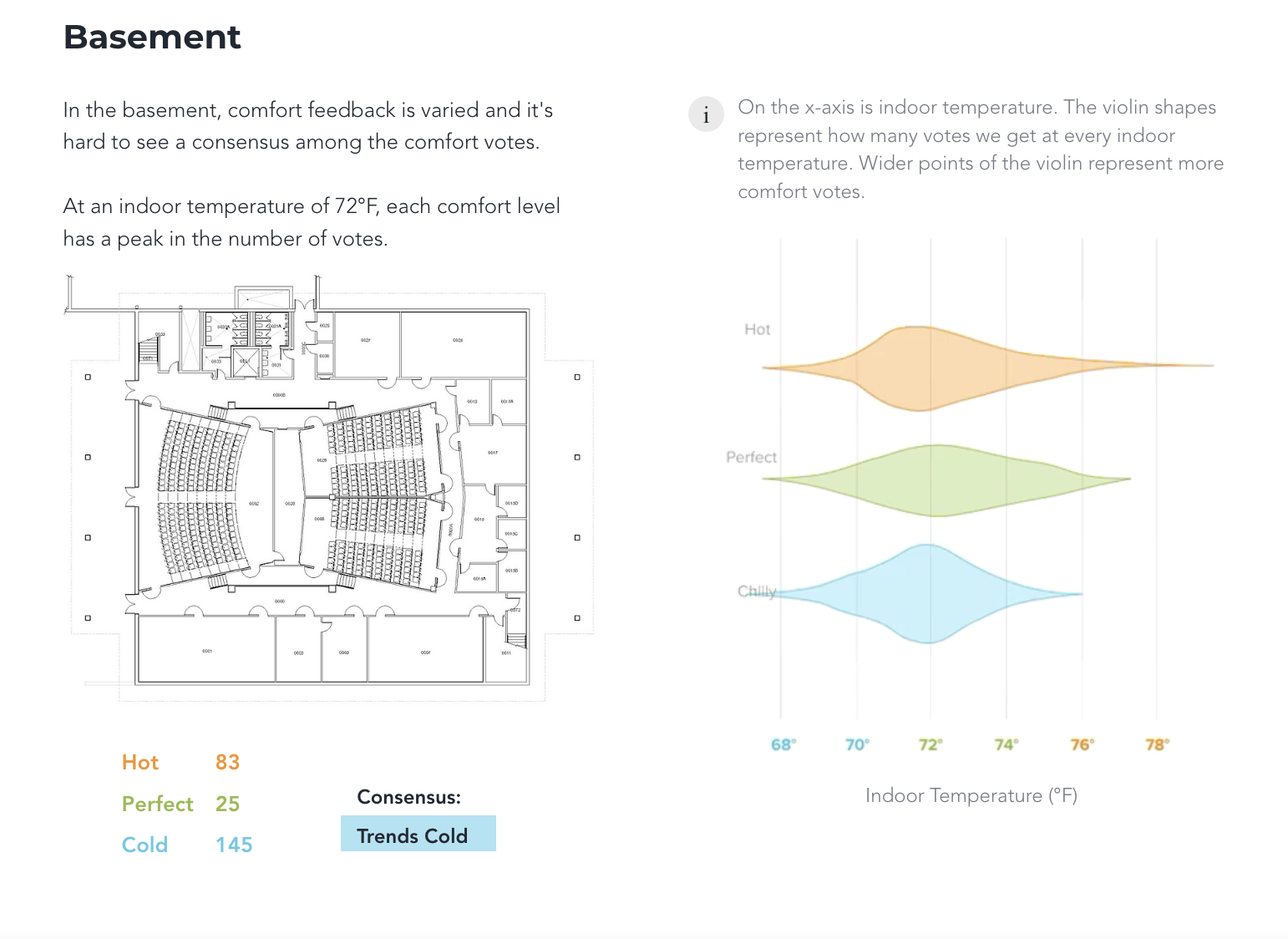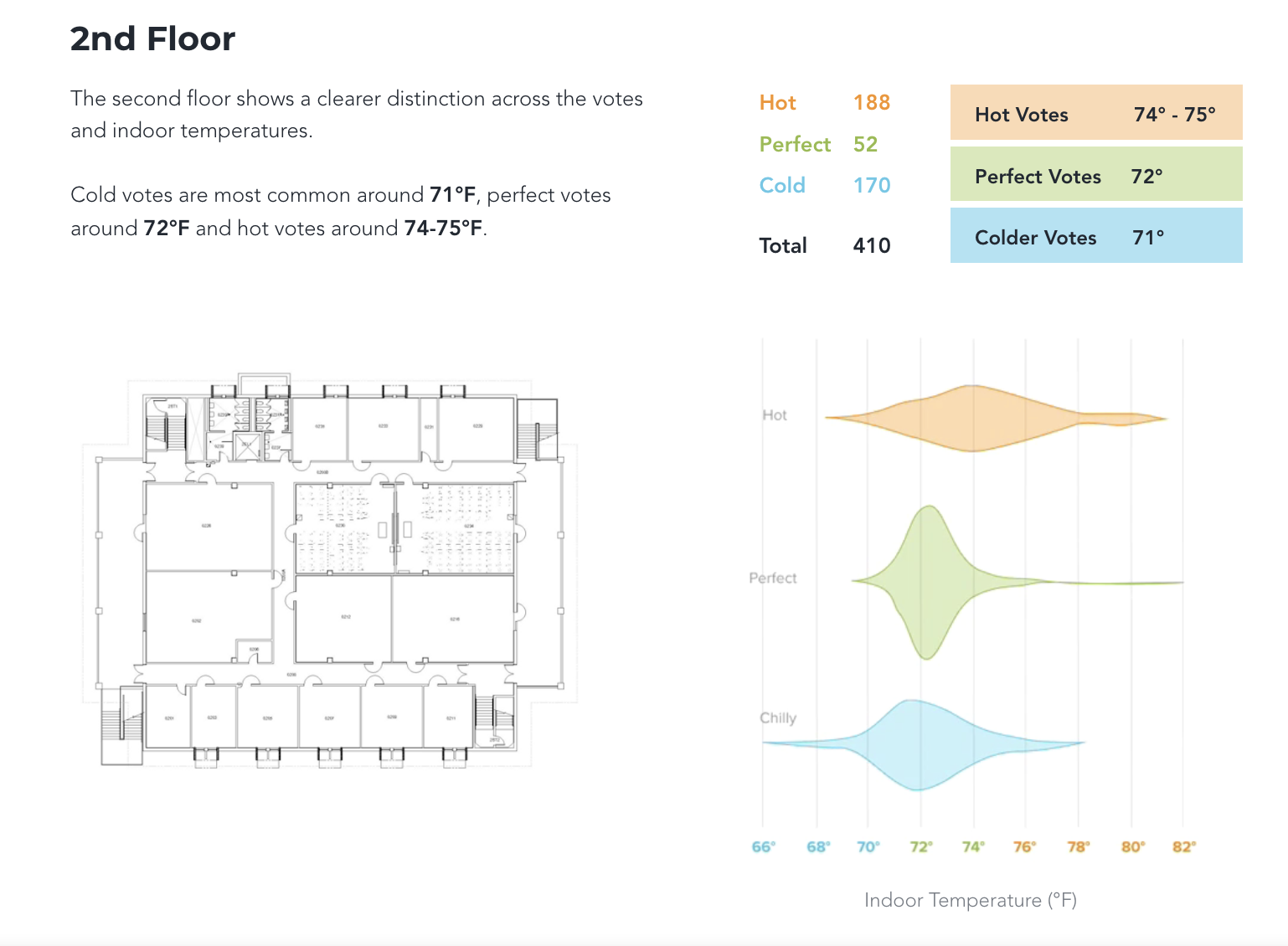Investigating Wellman Hall
As one of the busiest buildings on campus, it is no surprise that Wellman Hall receives the highest number of feedback every year. The building spans across three levels, all of which have varying reports of comfort. Since TherMOOstat was made available as a comfort reporting tool in 2015, our team has been studying Wellman feedback to thoroughly understand the comfort issues in this building and work toward a solution.

Winter 2015 - Spring 2016 Feedback
Over the course of 2015, we tracked comments that users submitted with their thermal feedback, as showcased on the right. These comments from Wellman Hall provided additional context to the thermal comfort feedback, such as stuffiness and poor airflow to the number of layers needed to keep warm.
“WHY IS IT SO HOT IN WELLMAN 6?! I CAN’T FOCUS IN CLASS BECAUSE I CAN’T BREATHE CAUSE IT’S SO HOT!!!”
“Wellman 6 is probably the stuffiest and most humid lecture hall on campus. There’s poor airflow and it’s either too warm and stuffy or too cold.”
“Hey, it is freezing in Wellman 233 to the point where students are bringing jackets. Please stop making a blizzard in there.”
“Wellman 26 is always too warm and very stuff. It’s not hot enough to make you sweat, but it is overly warm which makes me drowsy.”
Summer 2016 Analysis
Student intern Jessica Colvin helped track feedback from 32 rooms in Wellman Hall. She looked for patterns in the feedback (i.e. consistently hot or cold), verified that the room met its setpoints (at the time of receiving the feedback), and monitored rooms over time (alongside incoming work orders).
Fall 2016 - Summer 2018 Changes
To address the volume of thermal feedback from Wellman Hall and the majority of cold feedback in recent months, we attempted to adjust the programming for the HVAC controls system during the fall of 2016. Since airflow has an impact on comfort, in addition to temperature, we lowered the airflow in the rooms that received a lot of cold feedback.
In the summer of 2018, Facilities Management conducted an air balance and converted some exterior rooms from variable air volume (VAV) to constant air volume (CAV), to keep dampers from closing and causing noise issues.
Winter 2019 Analysis
Josue Aleman is a Data Science Intern at the Energy Conservation Office. Josue used Python to investigate 980 comfort votes from Wellman Hall, a building that receives the most feedback across campus. Josue's findings below show the votes in Wellman Hall vs. the indoor temperatures of the building at the time the votes were submitted.
- Basement

- 1st Floor

- 2nd Floor

Summer 2019 Project
In the summer months of 2019, Facilities Management tested, adjusted, and balanced the HVAC system. Over the course of the summer, we made sure that all the working equipment systems were present, the filters were cleaned, the fans were fully operating, and the HVAC control system functioned as intended.
We hope this project will positively impact comfort in Wellman Hall. With this in mind, please continue to use TherMOOstat so that we can continue to monitor the comfort before, during, and after the project in Wellman Hall!
Related Articles

Investigating Young
Lily, a Green Buildings Intern at the Energy Conservation Office, investigated Young Hall after we received countless cold and chilly complaints. Thanks to her work, the temperature went from consistently cold to comfortable.
